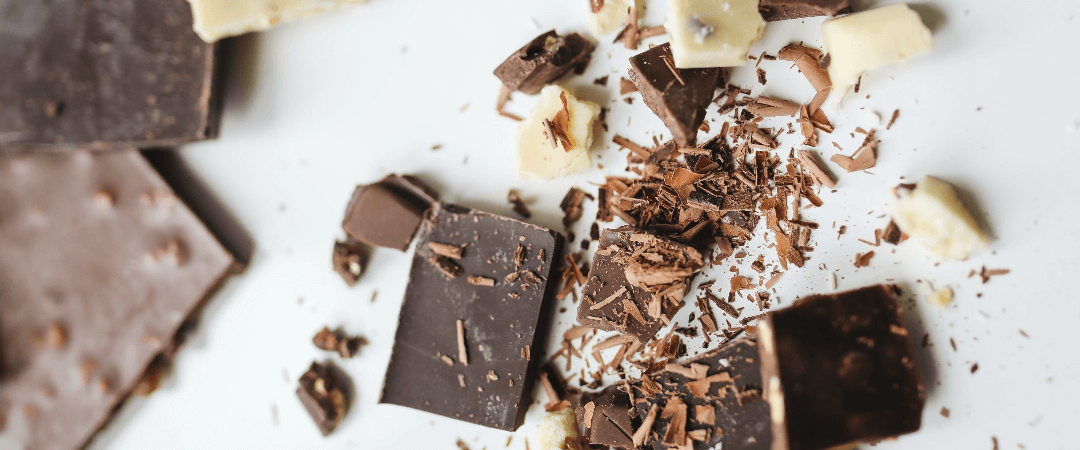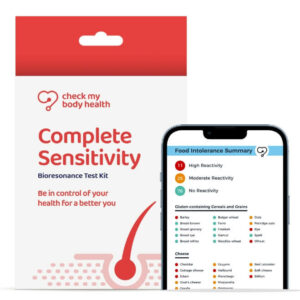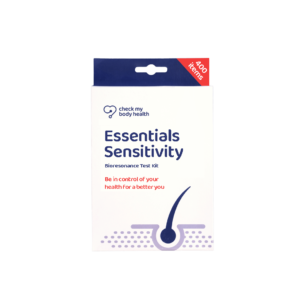
Medically reviewed by Sian Baker, Dip ION mBANT mCNHC
on December 2, 2023. To give you technically accurate, evidence-based information, content published on the Check My Body Health blog is reviewed by credentialed professionals with expertise in medical and bioscience fields.
Signs & Symptoms of a Chocolate Intolerance
Chocolate, a beloved treat for many, has a complex composition that can sometimes trigger adverse reactions. In this in-depth exploration, we’ll unravel the mysteries of chocolate allergies and intolerances. Examining the signs and symptoms, the reasons behind stomach discomfort after chocolate consumption. We will explain the testing methods for chocolate allergies or intolerances. The prevalence of chocolate intolerance, the potential link between chocolate and heartburn. We will also give you some alternatives to chocolate if you suspect you may have an allergy or intolerance.
Can you be intolerant to chocolate?
Yes, some people may indeed experience allergic reactions or intolerance to certain components found in chocolate. Allergies involve the immune system’s response to specific proteins, while intolerances are often related to difficulties in digesting certain substances.
How common is a chocolate intolerance?
Chocolate intolerance is less common than other food intolerances, but it can still affect some individuals. Factors such as the type of chocolate, its ingredients, and individual sensitivities contribute to the prevalence of chocolate intolerance. It’s essential to differentiate between true intolerance and other factors that may cause discomfort after consuming chocolate.
Signs you may have a chocolate intolerance
There are a number of common symptoms you should look out for if you think you may have a chocolate intolerance.
- Skin Reactions: Allergic reactions to chocolate can manifest on the skin, resulting in itching, hives, eczema, or redness.
- Digestive Symptoms: Individuals with a chocolate allergy or intolerance may experience digestive issues such as nausea, vomiting, abdominal pain, bloating, or diarrhoea.
There are also a number of common questions we are asked by people who think they may have a chocolate allergy or intolerance. These include:
Why does chocolate hurt my stomach?
The answer is that there are several factors that can contribute to stomach discomfort after eating chocolate. These factors are:
- Caffeine Content: Chocolate contains caffeine, a stimulant that can lead to stomach upset in some individuals, especially those sensitive to caffeine.
- Theobromine Sensitivity: Theobromine, another compound found in chocolate, can also cause stomach discomfort. Some people may be more sensitive to theobromine, experiencing nausea or stomach pain.
- Sugar Content: High sugar content in certain chocolates can contribute to digestive issues, including bloating and discomfort.
Why do I have sudden diarrhoea after eating chocolate?
If you experience sudden diarrhoea after eating chocolate, it could be attributed to various factors:
- Lactose Content
- Artificial Sweeteners
- Caffeine and Theobromine
Does chocolate cause heartburn?
Yes, the relationship between chocolate consumption and heartburn is noteworthy. Chocolate contains substances that may induce relaxation in the lower esophageal sphincter (LES), a muscular structure that separates the stomach from the esophagus. This relaxation can create conditions conducive to the reflux of stomach acid, leading to the sensation commonly known as heartburn.
Why do I have phlegm after eating chocolate?
The presence of phlegm after consuming chocolate may be attributed to several factors. Chocolate contains compounds that can stimulate the production of saliva and mucus in the respiratory and digestive tracts. Additionally, the fat content in chocolate can contribute to a sensation of thickness or coating in the throat.
For some people, an increase in mucus production may be a natural response to certain foods, and chocolate happens to be one of those triggers for some people. It’s important to note that this reaction varies among individuals, and not everyone may experience an elevation in phlegm after consuming chocolate.
How to test for a chocolate intolerance?
The good news is that it is possible to test if you’re allergic to chocolate without leaving the comfort of your home.
- Attempt an elimination diet, when you chocolate from your diet to see if your symptoms stop.
- Track what you eat and any symptoms you have in a food diary and see if there’s any crossover.
- Speak to a doctor and talk to them about your symptoms.
- Take a food intolerance test, such as an advanced food intolerance test, which specifically tests a sample of your hair for a chocolate intolerance.
Chocolate substitutes and alternatives
If you are attempting an elimination diet or you have confirmed you have a chocolate intolerance you’re likely looking for ways to satisfy those sweet cravings.
Here are a few of our favourites:
- Carob: Carob is often used as a chocolate substitute, providing a similar flavour profile without containing caffeine or theobromine.
- White Chocolate: While not a true chocolate, white chocolate is caffeine-free and may be suitable for those with chocolate allergies.
- Fruit-based Desserts: Opt for desserts featuring fruits such as berries, which offer natural sweetness without chocolate.
- Nut Butters: Nut butters, such as almond or peanut butter, can provide a rich and satisfying flavour without the need for chocolate.




